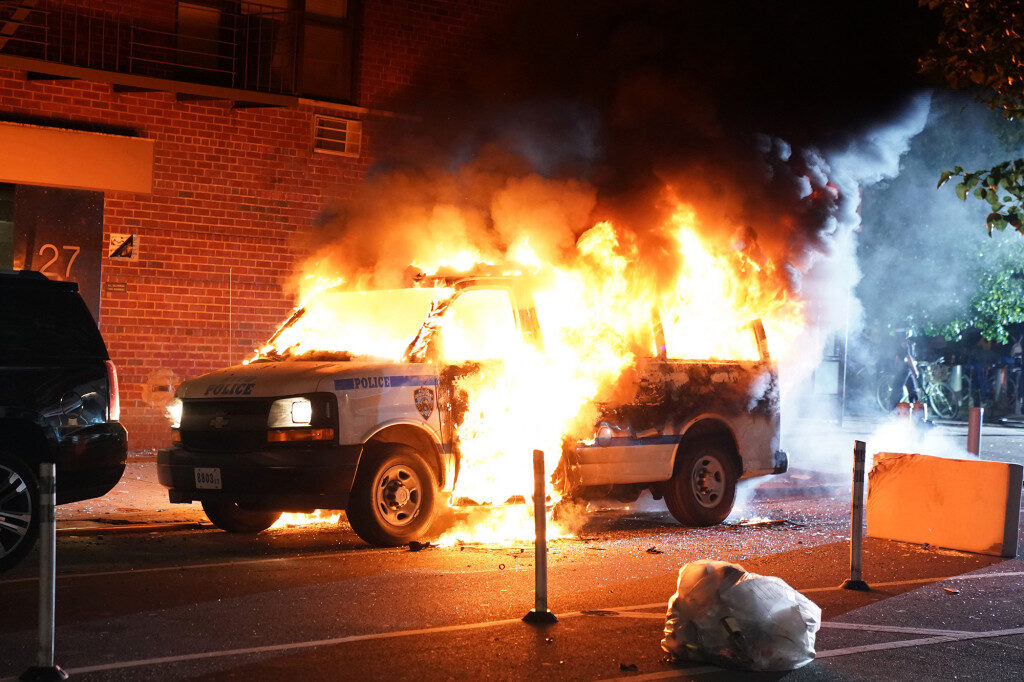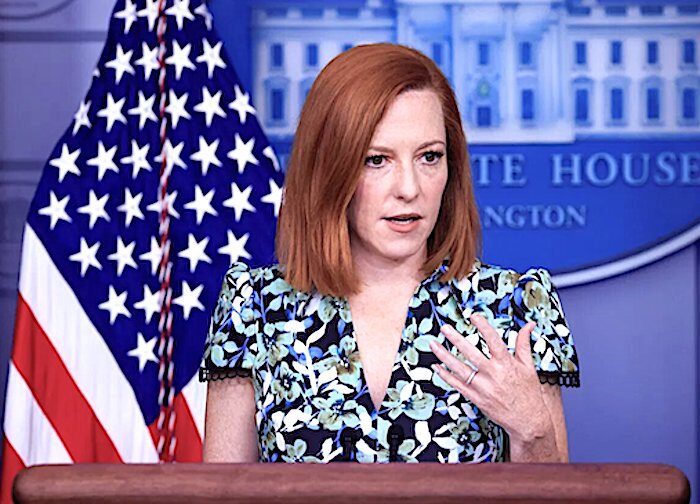Psaki said crime began increasing about 18 months ago when the COVID-19 pandemic started — and not 13 months ago with the nationwide protests and riots that followed the murder of George Floyd by a Minneapolis cop.
"There's been actually a rise in crime over the last five years, but really the last 18 months," Psaki said at her daily press briefing, ahead of a speech by Biden on Wednesday on rising crime, which Psaki said the White House believes is actually linked to the availability of guns.

Nationwide, crime rates dipped during the '90s and early 2000s before violent crime began to creep higher and then took off in the second half of 2020.
New York City's murder rate, for example, dropped steadily from more than 2,000 victims in 1990 and 1991 before bottoming out with 328 murders in 2014.
The murder rate rose slightly in New York City to 352 in 2015 before declining to a recent annual low of 289 murders in 2018. The rate ticked up to 319 in 2019 before soaring 44 percent to 462 murders in 2020, driven by slayings in the second half of the year.
The national crime rate gradually declined over two decades before also increasing in 2015 and remaining elevated in 2016. When 2020 data is complete, the national murder rate is expected to be about 25 percent above 2019.
Psaki describing the crime bump as dating back five years but "really" 18 months ago reflects a Democratic argument that more crime is happening because of economic conditions associated with COVID-19 lockdowns that started in March 2020 rather that often unprosecuted lawlessness linked to rioting, looting and police defunding beginning at the end of May 2020.
But the backdating is belied by crime statistics from major cities that experienced significantly more crime in the first five months of 2021 than in the first five months of 2020 — and both periods are included in Psaki's 18-month timeframe.
New York City had 17.4 percent more murders, 73 percent more shootings and 24.9 percent more car thefts as of the end of May compared to the year-to-date total in May 2020.
In Washington, DC, murders as of late May were up 25 percent compared to the same time in 2020 and vehicle thefts were up 34 percent.
Psaki said "the president feels a lot a great deal of the crime we're seeing is a result of gun violence, You can expect he'll speak to that and his commitment to continuing to address gun violence and gun safety in the country."
Psaki said Biden is a supporter of keeping police "on the beat" and that his $1.9 trillion American Rescue Plan Act, which passed in March, included funds "to help small businesses [and] help keep cops and firefighters on the beat."
Democrats are divided on police funding and the party's left wing cut large sums from police departments last year in New York, Minneapolis and other cities.
Biden historically advocated for extremely harsh penalties for criminals — so much so that he's been rebuked for it by both leftwing and conservative critics. He lobbied for a since-repealed 100:1 sentencing disparity between crack cocaine, which was more commonly used by blacks, and powder cocaine favored by wealthy whites. On his final day as president, Donald Trump released two prisoners serving life without parole for marijuana under Biden's 1994 crime law.





Comment: Reality wins out. Witness Chicago's plight, where lunatic Mayor Lightfoot has pushed her defund police platform: The benighted policy of cutting policing budgets plus the installation of Soros-backed, soft on crime AGs, has led to this debacle. But don't believe your lying eyes.